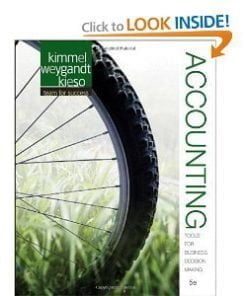Solution Manual for Managing, Controlling, and Improving Quality, 1st Edition, Douglas C. Montgomery, Cheryl L. Jennings Michele E. Pfund
$55.00 Original price was: $55.00.$29.99Current price is: $29.99.
Solution Manual for Managing, Controlling, and Improving Quality, 1st Edition, Douglas C. Montgomery, Cheryl L. Jennings, Michele E. Pfund,
This is completed downloadable of Solution Manual for Managing, Controlling, and Improving Quality, 1st Edition, Douglas C. Montgomery, Cheryl L. Jennings Michele E. Pfund

Product Details:
- ISBN-10 : 9780471697916
- ISBN-13 : 978-0471697916
- Author: Douglas C. Montgomery, Cheryl L. Jennings, Michele E. Pfund
Managing, controlling and improving quality is a critical activity in modern business organizations. Quality is directly linked to productivity, competitiveness, customer satisfaction, business growth, elimination of waste and other non-value added activities, and overall business success. Cycle time and throughput is just as important in a hospital emergency room as it is in a semiconductor factory. Defects and errors don’t occur just in factories, they occur in transactional and service business such as banks, insurance companies, and hospitals. Even your local and state governments have a keen interest in improving service quality in operations such as issuing drivers licenses and motor vehicle registration. The U.S. Navy has had an intensive quality improvement program for many years.
This book presents an organized approach to quality management, control, and improvement. Quality problems usually are the outcome of uncontrolled or excessive variability in product or service characteristics that are critical to the customer and statistical tools and other analytical methods play an important role in solving these problems. However, these techniques need to be implemented within a management structure that will ensure success. We focus on both the management structure and the statistical and analytical tools. Our approach to organizing and presenting this material is based on many years of teaching, research, and professional practice across a wide range of business and industrial settings.
Table of Content:
Chapter 1. Introduction to Quality.
1.1 The Meaning of Quality and Quality Improvement.
1.2 A Brief History of Quality Control and Improvement.
1.3 Statistical Methods for Quality Control and Improvement.
1.4 Quality and Productivity.
1.5 Quality Costs.
1.6 Legal Aspects of quality.
1.7 Implementing Quality Improvement.
Chapter 2. Management Aspects of Quality.
2.1 Introduction.
2.2 Quality Philosophy and Management Strategies.
2.3 The DMAIC Process.
Chapter 3. Tools and Techniques for Quality Control and Improvement.
3.1 Introduction.
3.2 Chance and Assignable Causes of Quality Variation.
3.3 The Control Chart.
3.4 The Rest of the Magnificent Seven.
3.5 Implementing SPC in a Quality Improvement Program.
3.6 An Application of SPC.
3.7 Applications of Quality Process and Quality Improvement Tools in Transactional
and Service Businesses.
Chapter 4. Statistical Inference about Product and Process Quality.
4.1 Describing Variation.
4.2 Probability Distributions.
4.3 The Normal Distribution.
4.4 Statistical Inference.
4.5 Statistical Inference for a Single Sample.
4.6 Statistical Inference for Two
Chapter 5. Control Charts for Variables.
5.1 Introduction.
5.2 and R x Charts.
5.3 and S Charts.
5.4 Shewart Control Chart for Individual Measurements.
5.5 Summary of Procedures forR, S, and Individuals Charts.
5.6 Example Applications ofR, S, and Individuals Charts.
5.7 Cumulative Sum Control Charts.
5.8 Exponentially Weighted Moving Average Control Charts.
5.9 Process Capability Analysis Using Control Charts.
Chapter 6. Control Charts for Attributes.
6.1 Introduction.
6.2 The Control Chart for Fraction Nonconforming.
6.3 Control Charts for Nonconformities (Defects).
6.4 Choice between Attributes and Variables Control Charts.
6.5 Guidelines for Implementing Control Charts.
Chapter 7. Lot-by-Lot Acceptance Sampling Procedures.
7.1 The Acceptance Sampling Problem.
7.2 Single-Sampling Plans for Attributes.
7.3 Double, Multiple, and Sequential Sampling.
7.4 Military Standard 105E (ANSI/ASQC Z1.4, ISO 2859).
7.5 The DodgeRomig Sampling Plans.
7.6 Military Standard 414 (ANSI/ASQ Z1.9).
7.7 Chain Sampling.
7.8 Continuous Sampling.
7.9 Skip-Lot Sampling Plans.
Chapter 8. Process Design and Improvement with Designed Experiments.
8.1 What Is Experimental Design?
8.2 Examples of Designed Experiments in Process and Product Improvement.
8.3 Guidelines for Designing Experiments.
8.4 The Analysis of Variance.
8.5 Factorial Experiments.
8.6 The 2k Factorial Design.
8.7 Fractional Replication of the 2k Design.
8.8 Response Surface Methods.
8.9 Robust Product and Process Design.
Chapter 9. Reliability.
9.1 Basic Concepts of Reliability.
9.2 Life Distributions.
9.3 Instantaneous Failure Rate.
9.4 Life Cycle Reliability.
9.5 Determining System Reliability from Component Reliabilities.
9.6 Life Testing and Reliability Estimation.
9.7 Availability and Maintainability.
9.8 Failure Mode and Effects Analysis.
References.
Glossary.
Appendix.
A. I Summary of Common Probability Distribution Cities Used in Quality Control and Improvement.
A. II Cumulative Standard Normal Distribution.
A. III Percentage Points of the Distribution.
A. IV Percentage Points of the t Distribution.
A. V Percentage Points of the F Distribution.
A. VI Factors for Constructing Variables Control Charts.
Answers to Selected Exercises.
Index.
People Also Search:
managing controlling and improving quality pdf
managing controlling and improving quality 1st edition
managing controlling and improving quality 1st edition download scribd
managing controlling and improving quality 1st edition solution manual download pdf
Related products
Solution Manual
Solution Manual
Auditing A Risk Based-Approach to Conducting a Quality Audit Johnstone 10th Edition Solutions Manual
Solution Manual
Prentice Hall’s Federal Taxation 2014 Comprehensive Rupert 27th Edition Solutions Manual
Solution Manual
Solution Manual
Solution Manual for Data Structures and Other Objects Using C++, 4/E Michael Main, Walter Savitch
Solution Manual
International Business Competing in the Global Marketplace Hill 10th Edition Solutions Manual
Solution Manual
Solution Manual for Introduction to Robotics Mechanics and Control 3rd Edition by Craig
Solution Manual
Solution manual for Accounting: Tools for Business Decision Making Kimmel Weygandt Kieso 5th Edition











